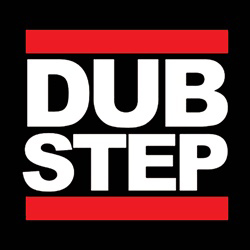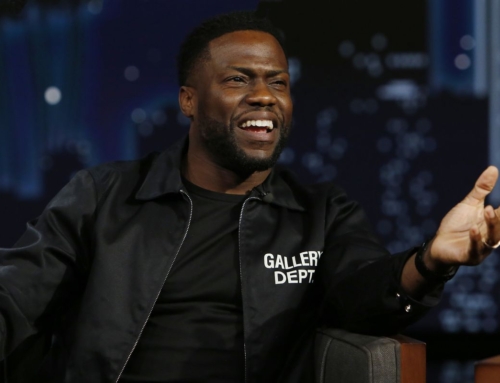 Growing up I was always a huge fan of electronic dance music, but I kept it a hidden secret. While all the other kids were listening to hip-hop, rock, and pop, I was off in my own world listening to dance music from Chicago, New York, France, and London. I fell in love with the house music of the 80s/90s, but it didn’t seem to be mainstream amongst my peers. So I kept it a secret. House and dance music became a world I could escape to, a world that only a select few had the honor to experience.
Growing up I was always a huge fan of electronic dance music, but I kept it a hidden secret. While all the other kids were listening to hip-hop, rock, and pop, I was off in my own world listening to dance music from Chicago, New York, France, and London. I fell in love with the house music of the 80s/90s, but it didn’t seem to be mainstream amongst my peers. So I kept it a secret. House and dance music became a world I could escape to, a world that only a select few had the honor to experience.
As the years passed I started to experience the rhythmic sounds of drum and bass, as well as Dubstep from the 90s underground music scene. I was being exposed to a darker side of electronic dance music, but it was such a riveting journey. While the house scene was gaining popularity in the states, the UK was experimenting with electronic patterns in the form of UK garage (2-step), but whenever I tried to share my discoveries with people they thought the music I liked was “weird.” They didn’t understand the concept of drum and bass and why Dubstep had such an overwhelming bass.
I could have easily tried to persuade people that Roni Size was awesome and that Digital Mystiks were insanely dope, but I didn’t see any point in trying to wow the masses. Instead I just waited around, did my EDM thing: downloading music, researching artists, and making playlists. Nobody in mainstream culture, especially American culture, cared about Dubstep or drum and bass. It was just something the kids did on the weekend at basement parties. Dubstep was this subculture within the EDM community that you didn’t hear blasting on the radio, and you surely didn’t hear rappers like Flo Rida spitting rhymes on songs with an iconic Dubstep bass drop (Flo Rida’s remix of Avicii’s “Levels” called “Good Feeling”).
Apparently, Dubstep didn’t become a trendy mainstream representation of EDM until Skrillex stepped onto the scene with his darker envision of Dubstep. The days of hearing about local underground spots that play the gritty rhythms of Dubstep, are now being replaced with conversations of simply heading to the nightclubs that play the top hits, which nowadays include Dubstep. It’s hard even to have a conversation about music nowadays without someone ranting and raving about how they just fell in love with Dubstep. They may not like or understand any other genre of EDM, but to them Dubstep is the greatest thing ever invented.
Don’t get me wrong, I love Dubstep, but I’ve always loved it. I’m not one of those individuals who are prone fall in love with a genre of music just because it’s mainstream. I don’t care about being trendy. Okay, maybe when it comes to my fashion choices I do prefer a trendy look, but I prefer my music tastes to be eclectic. Listening to the sounds of drum and bass, and Dubstep has been something I’ve been doing for years.
During the 2000s dubstep was still a growing scene in underground circuit, as well as the UK. But as usual, America is always discovering things last minute and then saying it’s new. This entire concept of what’s new is one that plagues mainstream culture, but we’ve come to accept it. Now it’s the standard to take concepts such as the musical prowess of Dubstep and say it’s a new trend. But in actuality, Dubstep has been around since the late 90s and early 2000s.
So unless you have the magical power to rewrite history by stepping into a time machine, then I’m pretty sure Dubstep isn’t a new trend. Skrillex, as awesome as he may be, didn’t invent Dubstep. But when you browse YouTube and other aspects of the web, you constantly see people arguing that Skrillex invented Dubstep. The arguments always crack me up, especially since they lack fundamental logic.
Seriously, lets analyze this. Skrillex was born in 1988 and Dubstep started spiraling out of the late 90s UK garage scene. So I’m pretty sure at that time Skrillex was just a little kid living in California – and even though little kids have the ability to be epic – Skrillex didn’t invent Dubstep.
I don’t expect hardcore fans of Skrillex to know the history of Dubstep, but they should take the time to learn it. See, when I first started falling in love with music the first thing I did was to begin to look at its history. Every genre has an intricate one, which influences the evolution of the sound within the genre. Dubstep has of course been evolving over the years, especially with movements such as post-dubstep, but this isn’t news. Dubstep has been around for quite some time, even going back to the early 90s when some Djs might have been experimenting with the UK garage sound. These hints of experimentation led to the late 90s producers such as Zed Bias, Steve Gurley, Oris Jay, and El-B laying the foundations for Dubstep.
Nobody expects one genre of music to stay the same, especially with so much innovation within the EDM community. But it’s important not to become blindsided by trendiness. Appreciate a certain category of EDM because it’s good music, not because it’s being played on commercials, the radio, and television shows. Things have a habit of being popular for a while, but then they’ll have a gradual decline in popularity. It’s sort of like the hottest kid in school. Everybody wants to be with the head cheerleader or the star of the football team, but after awhile it’s played out. Those people lose the unique quality that made them a hot commodity in the first place. That principle can be applied to Dubstep. Don’t chase after it or praise it just because it’s popular for the moment. Popularity doesn’t last forever.




